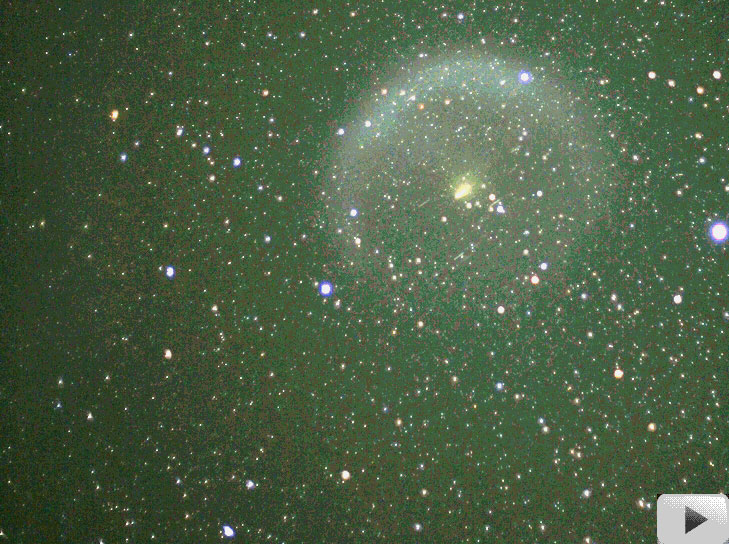Credit & Copyright: Robert H. McNaught
Explanation:
What's that cloud drifting in space?
It's not an astronomical nebula -- those appear to stay put. Atmospheric clouds
don't look like this.
The answer to last week's
sky mystery turned out to be
orbiting and expanding debris from the
upper stage of a
failed Russian rocket
that exploded unexpectedly.
The cloud became visible to unaided southern hemisphere observers,
and its cause was initially unknown.
The above time lapse movie shows the cloud drifting as seen from
Australia.
Streaks in and near the cloud are likely large pieces of debris.
The debris cloud is more than an
astronomical curiosity -- particles from this
cloud and others could become projectiles
damaging existing satellites.
As the cloud disperses,
many particles will fall to Earth, but many more may help make low Earth orbit an
increasingly
hostile environment.
1999 2000 2001 2002 2003 2004 2005 2006 2007 2008 2009 2010 2011 2012 2013 2014 2015 2016 2017 2018 2019 2020 2021 2022 2023 2024 2025 |
Yanvar' Fevral' Mart Aprel' Mai Iyun' Iyul' Avgust Sentyabr' Oktyabr' Noyabr' Dekabr' |
NASA Web Site Statements, Warnings, and Disclaimers
NASA Official: Jay Norris. Specific rights apply.
A service of: LHEA at NASA / GSFC
& Michigan Tech. U.
|
Publikacii s klyuchevymi slovami:
rocket - rakety
Publikacii so slovami: rocket - rakety | |
Sm. takzhe:
Vse publikacii na tu zhe temu >> | |
